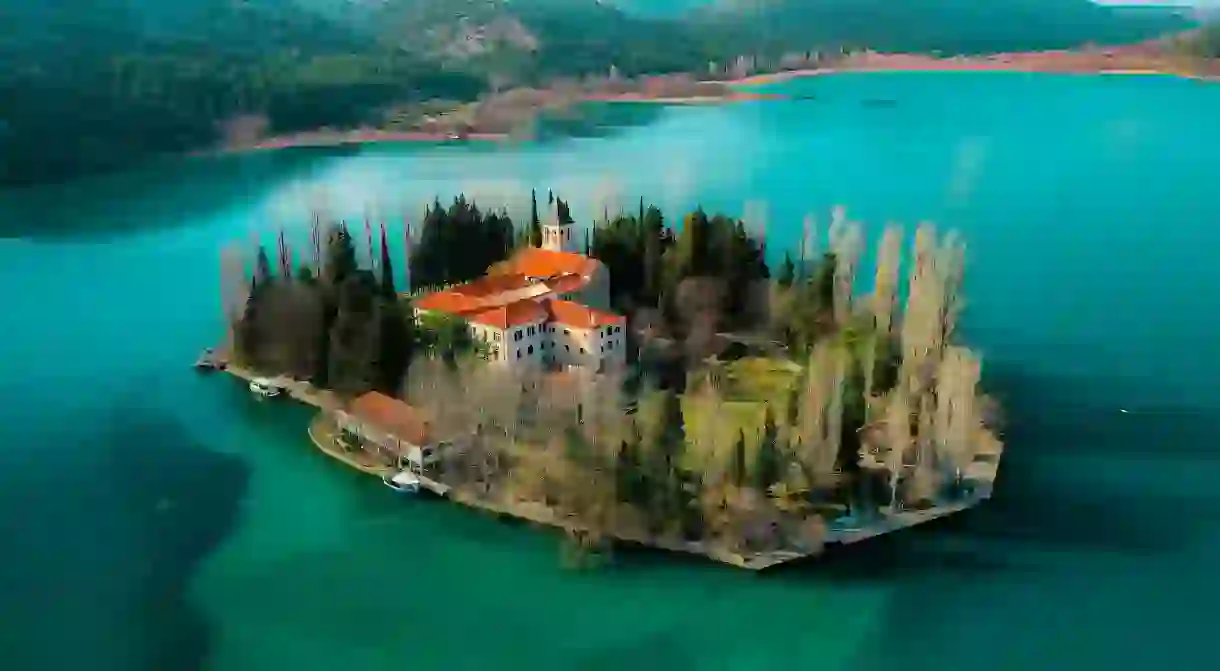Underrated Places in Istria, Croatia

Dotted with quaint, unspoiled hilltop villages and underdeveloped spots on the coast, Istria perfectly suits the visitor happy to wander with no major sight or activity in mind. Each day may be bookended by renowned regional gastronomy, as well as an Italian heritage, these rural communities share a love of fine cuisine.
Fažana
A lovely fishing village within easy reach of Pula, Fažana is the jumping-off point for boats to the unique national park of Brijuni. Often overlooked for this reason, this favoured retreat of Roman aristocracy contains enough traditional taverns and seaside fun to keep the visitor happily occupied for a couple of days, relieved of any major sightseeing duties.

Raša
Raša is a curio, a historical anomaly, and a treat for fans of pre-war Italian architecture. Originally a mining community where striking workers protested against their Italian overlords in 1921, Raša was chosen by Mussolini as a model of 1930s urban planning. Il Duce had architect Gustavo Pulitzer-Finali create a functionalist new town of arcades and symbolic buildings. Even the church was fashioned in the shaped of an upturned coal wagon. Today Raša lies almost empty, the mines long closed and Mussolini long gone. You’ll find it four kilometres (2.5 miles) west of Labin on Istria’s east coast.
Grožnjan
Known as ‘The Town of Artists’, Grožnjan was revived by the local cultural community from the 1970s onwards. Galleries and boutiques gradually opened and the community, the only one in Istria with an ethnic Italian majority, began to thrive. Today, with its summer jazz festival, Grožnjan is a busy village of some 700 inhabitants, with a significant influx of weekend visitors from over the border in Italy.
Žminj
At the centre of the Istrian peninsula, Žminj sits at the crossroads of the main roads to both coasts and into the interior, making it a handy place to base yourself. It’s also an attractive destination in its own right, with a number of historic churches decorated with bright frescoes. Hiking, cycling and agrotourism typify its tourist offering.
Buzet
Close to Croatia’s border with Slovenia, Buzet is more than just an administrative centre – although its supermarkets and petrol stations prove invaluable during any rural stay. Comprising a historic hilltop settlement of narrow cobbled streets and modern-day community below, Buzet springs to life during the truffle season from mid-September onwards.
Pazin
Capital of Istria, Pazin is best known for its castle, used by Jules Verne for his adventure story Mathias Sandorf. Although the French writer never visited Pazin, relying on local contacts to send him information, the town is happy to trade on the connection. Pazin Castle remains a dramatic sight, back-dropped by a gorge and housing the Istrian Ethnographic Museum. The town even has that wonderful rarity for Istria, a railway station, although the bus service is more frequent and convenient.

Limski kanal
Even Croatia has few settings as dramatic as the Limski kanal. A deep estuary 10 kilometres (six miles) long that cuts into the west coast of Istria just north of Rovinj, the Limski kanal resembles a Norwegian fjord. British cinematographer Jack Cardiff chose to film his Viking drama The Long Ships here in 1964. Today tourist boats, booked in Rovinj, glide along its green waters and locals sell fresh oysters, for which Limski is also famous, near the shore.
Motovun
Overlooking the truffle-rich forest of the same name, Motovun hosts Croatia’s best-loved film festival – part Glastonbury, part Sundance – but is equally revered for the views it offers from its Venetian fortifications. Since being revived by the local artistic community, the town has seen a steady opening of studios, boutiques and galleries, a thriving trade reflected in the number of local cafés and restaurants.
Višnjan
Višnjan is a typically hilltopped Istrian village of a few hundred souls whose attractions would be extremely modest were it not for its renowned observatory. More than 100 minor planets, two comets and 1,400-plus asteroids have been discovered here. On Saturday evenings from May to September, the public can take part in Astro Nights, two hours of observations, children’s workshops and a tour. Explanations in English are provided.
Vrsar
A waterside retreat without the crowds of nearby Rovinj or Poreč, Vrsar is today best known for the sprawling sculpture park that lies just outside it. It’s also handy for boat cruises along the nearby Limski kanal. Croatia’s first nudist colony still operates here, set up when they were considered quite risqué.
Did you know – Culture Trip now does bookable, small-group trips? Pick from authentic, immersive Epic Trips, compact and action-packed Mini Trips and sparkling, expansive Sailing Trips.













